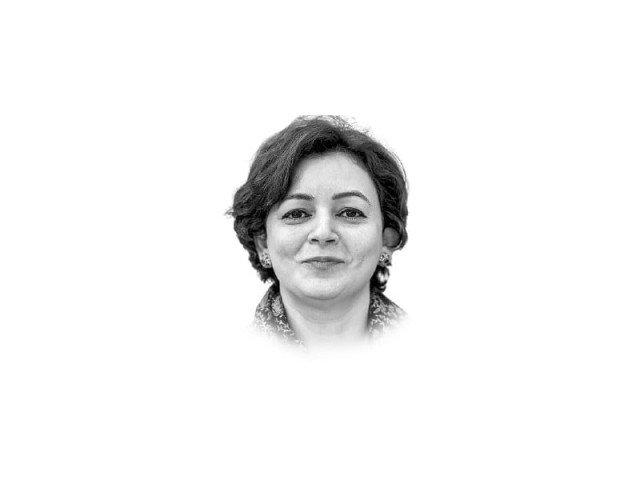A letter from Bano
Quality that befits a ‘hero’ in Pakistan is his capability to convince society of his skill and usefulness

Respected Ustaad Sadeqain Naqqash,
I was perplexed by a question asked in GAT General, the HEC-recommended test for M-Phil/PhD admission conducted by the National Testing Service. The multiple-choice question wanted me to pick one out of four options to best explain your trade. The options were: a) painter, b) calligrapher, c) artist, and d) hero. For a thinker and an observer that I seek to be, all four traits were a perfect fit for a versatile artist, poet and recipient of four major civilian awards.
However, to fulfil the test requirement I picked ‘c) artist’ as my preferred answer though ‘d) hero’ was also on my mind. Since I could not process my thoughts alone, I have decided to write to you. Following are my arguments in support of c and d.
In our Pakistani context an ‘artist’ is a person who creates paintings or drawings as a profession or hobby but he is also an individual who habitually practises a specified reprehensible activity. You have created a large amount of work in your lifetime and are considered as one who kept on drawing and painting even after leaving this worldly abode.
I am referring to the works that regularly pop up from here and there and are associated with your name bringing fortune to the blessed owners. Of course, some of your works along with several personal life choices deserve censure and condemnation. I do not have details of your eating and sleeping habits but have heard stories of your easy-going lifestyle from your colleagues, my professors. You were equally well versed in the art of poetry and in Platonic thought both artists and poets are ‘twice removed from reality’, which justifies your unreal approach towards the monetary value of your works which you would hand over to visitors just like that. In this sense, you were a true artist living life in a different realm not worrying about societal conventions.
On the other hand, the quality that befits a ‘hero’ in Pakistan is his capability to convince society of his skill and usefulness. Not only were you able to attract real art promoters who would give you commissions like murals at State Bank Building, Frere Hall, Lahore Museum and Mangla Dam, your ingenious convinced the authorities of your calligraphic art to best suit the Islamic complexion of the Pakistani State. You were rightfully declared the national painter of Pakistan and were decorated as a real hero. Indeed, with your exceptional talent and intellect, you could pilot the Pakistani art. These are some of the characteristics of a born artist, a dervish, a star and a true legend. No doubt, Amjad Naqvi in his book, Image and Identity, has designated you to the status of Aarif. Talking of the books, please note that you have also been called ‘the Holy Sinner’ confirming the culpable status of artists in our society.
Ustaad ji, kindly allow me to share some personal reflections about your creative practices. I am in awe with your Michealangelo-like brilliance in painting murals and my all-time favourite is ‘Treasuries of Time’ (8x6 ft) at the State Bank of Pakistan, Karachi, your first large mural. In its appeal and approach the mural parallels ‘The School of Athens’ 1509-11, by the Italian Renaissance painter Raphael in the Vatican City. Both murals celebrate the intellectual achievements of mankind and credit the great philosophers, scientists, inventors, architects and other men of words who shaped the world we are living in. Like Raphael, you have also painted yourself amongst the learned. Any student of history would feel timid in such a company, I agree with your humble self-portrait. Your calligraphic abstractions are considered to be your signature style. The infusion of classical scripts and elements of nature used as emblems of divinity along with your expressive strokes are visual explanations of the verses of the Quran that you chose to paint. I must admit that I am a novice when it comes to poetry. So, need more time to write about your illustrated rubaiyat. And yes, we still have to discuss the so-called cubist style that some critics desperately try to correlate your paintings with. Allow me to write again.
Bano
April 2024
Published in The Express Tribune, April 5th, 2024.
Like Opinion & Editorial on Facebook, follow @ETOpEd on Twitter to receive all updates on all our daily pieces.



1729685382-0/Untitled-design-(57)1729685382-0-208x130.webp)











COMMENTS
Comments are moderated and generally will be posted if they are on-topic and not abusive.
For more information, please see our Comments FAQ